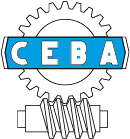More quality for bevel gears
More quality for bevel gears
Thanks to the integration of targeted software and suitable control equipment, Ceba Gears can now perform geometric checks for helix pitch and involute profiles on Klingelnberg bevel gears.
In recent years, certain companies have not only undergone organizational restructuring but have also strategically invested to enhance their competitiveness, further emphasizing product and service quality. Among them is Ceba Gears of Carate Brianza (MB), specializing in the production of gears, racks, toothed pulleys, splined shafts, and various types of grinding, placing significant emphasis on technological updates and increasingly managerial control of their operations.
“Current market conditions,” emphasizes Fabrizio Cesana, owner and leader of the company alongside his sister Loretta, “require precise dynamics in order and management processes. Our response was, some years ago, to undertake a targeted process of revision and optimization of all operational phases, including the integration of new machinery and additional support services.”
The latest addition in chronological order is the adoption of specific software and a control device installed on the machine (Renishaw). This enables geometric checks, including helix, involute, and pitch, on Klingelnberg spiral bevel gears. Additionally, the same controls can be performed on the Zeiss control center.
“Perhaps due to the significant investment involved, this technology is not widespread,” adds Cesana, “but it fits into the context of production control and the supply of certified graphs and reports, which has not yet found adequate recognition in the market. Except where mandatory, it represents a distinctive market opportunity.”
In summary, the technology involves, after a preliminary grinding phase for the bevel gear, the automatic use of a probe that processes a series of measurements, providing the results in graphs and certified reports. At this point, the operator, based on the specific order and requirements of the customer, can decide whether to accept or proceed with further processing.
“In such cases,” Cesana continues, “the software, in conjunction with the machine, recalculates corrections and proceeds automatically with additional grinding. Once finished, it is possible to recheck directly on the machine, generating the relevant graphs and reports, or proceed by taking the piece to the metrology department on Zeiss 6-axis systems for final inspection and certification.”
The adoption of this software and control system allows Ceba technicians greater process management efficiency, eliminating the previous need to move the piece from grinding to testing and vice versa in case of tolerance deviations.
Technology in continuous evolution
As highlighted, the company has always placed great importance on technological updates, evident in the continuous addition of new machinery to various production departments.
“In the last 18 months alone,” notes Cesana, “we have integrated four new machines into our workshop, including two new grinders capable of grinding up to 2000 mm in diameter and up to module 40, with CNC profiling and in-machine quality control.”
In addition to these, there are two CNC hobbing machines capable of cutting gears with diameters up to 1,200 mm, installed in March 2016, alongside a hobbing machine already operational since last year but with a working range up to 3,000 mm in diameter (module up to 30, with a vertical stroke of 1,000 mm).
“These machines,” Cesana adds, “are not standard but developed according to our precise technical specifications, addressing the diverse needs of the served sectors.”
The added value of quality
To enhance and certify the overall quality of its activities, the company introduced a new figure last year, engineer Guido Fusetti. He is specifically responsible for quality management from a regulatory, supervisory, and verification perspective.
“Engineer Fusetti’s role,” asserts Fabrizio Cesana, “translated into a more structured approach to quality management aligned with current needs, no longer exclusive to the foreign market, as it was until a few years ago, but also applicable to the Italian market.”
Regarding exports, which Ceba Gears views with increasing interest, the share currently stands at 35%, with Europe, North Africa, and Asia being the main directly and/or indirectly served areas, showing growth, much like the turnover.
“2015,” confirms Cesana, “was a positive year for us, a result achieved through the valuable contribution of our entire team, consisting of about thirty people today. Motivated and qualified operators who, at the end of the year, were given a production bonus as recognition for their efforts and achievements. The trend in 2016 has started positively, and if maintained, we plan to replicate this appreciated initiative at the end of the year.”
Positive results are driven by an expansion of the customer base. “We are even manufacturing some mechanical parts that will be installed on equipment at CERN in Geneva,” emphasizes Cesana, “reflecting a more structured vision of the business that simultaneously ensures flexibility, operational efficiency, and rapid responses.” This approach is made possible because Ceba Gears internally controls and manages the entire process (excluding only the heat treatment stage), from raw material procurement (with raw bar material ready for use in a continuously expanding warehouse) to all necessary machining operations, up to delivery.
“Management processes,” Cesana concludes, “are increasingly digital, with total order traceability, favoring maximum optimization of timing, process quality, and service and product quality.”
Article published in Organi di Trasmissione magazine, June 2016.
